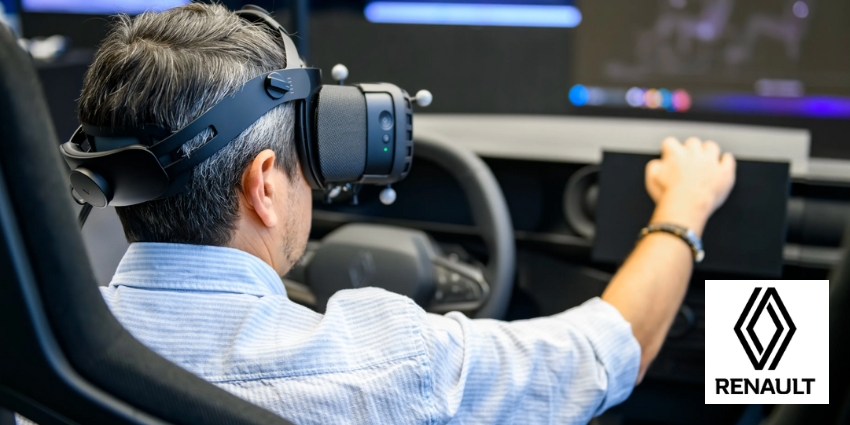XR security, compliance, and privacy concerns are changing everything. These days, extended reality isn’t just changing how we work, it’s transforming how we manage risks.
The moment XR crossed over from innovation labs to frontline workflows in industries like healthcare, aerospace, and finance, it collided headfirst with some of the world’s strictest regulatory frameworks. You’re not just dealing with hardware and software anymore.
You’re dealing with biometric data, live video streams, 3D spatial reconstructions, and immersive simulations that blur the lines between physical and virtual environments.
Imagine trying to ensure GDPR compliance when your XR platform is tracking eye movement and heart rate. Or maintaining HIPAA protections while your simulation tool runs patient scenarios across cloud-hosted servers. It isn’t easy, but it is possible.
Here’s how companies in regulated industries are navigating the minefield.
XR Security Compliance Frameworks: The Basics
Compliance is rarely simple, but with XR, it becomes even more complex.
Most traditional data compliance frameworks like HIPAA, GDPR, and PCI-DSS were designed for static systems: data at rest, behind firewalls, inside conventional interfaces. XR breaks that model. You’re dealing with live spatial data, continuous biometric capture, and interactive environments that blend digital overlays with physical operations.
In some cases, an employee’s iris scan is the login. In others, the layout of a hospital wing is captured in millimeter-perfect fidelity to build a digital twin. So, where does XR fit into compliance? Often, awkwardly.
Take GDPR. Under the regulation, anything that can be used to identify an individual, their face, their gait, even their behavioral patterns, is protected. XR platforms collect that data as part of routine functionality. Now add ambient data to the mix, the conversations, sounds, even visuals that headsets may capture in the background. That’s a compliance nightmare if it’s not handled correctly.
In healthcare, XR-based training modules for surgeons or immersive diagnostics can process protected health information (PHI) in real-time. Without appropriate data segmentation and encryption, you’re risking HIPAA fines.
Even PCI-DSS, traditionally focused on payment data, gets pulled into the XR orbit when financial institutions begin prototyping customer experiences in immersive environments. If that XR interface accesses cardholder data, even indirectly, it’s in scope.
The European Commission has already flagged this shift. In its recent regulatory outlook on immersive tech, it noted that “extended reality environments introduce novel vectors for surveillance and identity tracking”, and that existing laws like GDPR may require enhancement to truly address XR’s complexity.
Compliance Case Studies in the Real World
When it comes to XR security compliance, regulated industries are operating under tight legal mandates, with massive consequences for mistakes. That means immersive tools can’t just be powerful. They need to be verifiable, auditable, and deeply secure.
Here’s how companies across industries are handling the risks.
XR Security Compliance in the Legal Sector
When you’re handling evidence, security and compliance are crucial. The risks are everywhere, leaked digital twins of crime scenes and biometric profiles, to data transmission vulnerabilities.
That’s why Germany’s Bavarian State Criminal Police Office (BLKA) partnered with HTC VIVE to build the Holodeck: an immersive VR platform designed to reconstruct crime scenes with extraordinary precision. Officers, forensics experts, and legal professionals could step inside a scene, explore it together, and replay events as if they were physically there.
But this level of immersion meant collecting and syncing highly sensitive data, everything from motion paths and room layouts to eye tracking, facial expressions, and full-body scans.
HTC’s security architecture became a critical pillar of trust. The VIVE Focus 3 headset, paired with Location-Based Software Suite (LBSS), enabled secure, wireless data syncing with tight control over user coordination and session integrity.
Compliance in Government and Defense
In defense, one misstep in XR security is a geopolitical liability. The risks from leaked information about supply chains, national security strategies and more are astronomical. But the benefits of XR for training, simulations, and analysis are incredible too.
Headwall, a software company specializing in XR solutions for command control and intelligence operations, worked with Varjo to build systems specifically for the company’s XR-4 Secure Edition headset. The goal was to virtualize frontline operations while maintaining the highest levels of operational secrecy, particularly for NATO-aligned use cases.
The XR-4 is engineered with on-premises-only processing, which means no data leaves the device unless explicitly configured to do so. There’s no default cloud sync, no ambient leak, just local computation, tightly sandboxed and certified under the U.S. Trade Agreements Act (TAA).
This design removes the weakest link in most XR systems, the network. It allows government users to overlay 3D battlefield simulations, spatial intelligence, or logistics modeling without exposing sensitive information to third-party networks or cloud infrastructure.
Authentication is handled through biometric and multi-factor protocols, and the headset architecture isolates each operational instance. XR security compliance at its finest.
XR Security Compliance in the Industrial Space
In the industrial world, data breaches and security issues can lead to the loss of intellectual property, compliance fines, and gaps in essential data. Autoliv, a global automotive safety systems provider, uses XR tools across sites in China to reduce downtime, accelerate training, and improve design.
But when you’re overlaying digital twin environments onto real-world factories and handling frontline collaboration across borders, security can’t be bolted on later. Their solution? Microsoft Dynamics 365 Remote Assist, layered over a proprietary digital twin platform and deployed via Microsoft’s secure Azure cloud infrastructure.
Microsoft’s advantage is its deep integration with enterprise-grade identity tools. Autoliv employees authenticate using Azure Active Directory, ensuring that access is role-based and traceable. Every session is encrypted at rest and in transit.
But what makes this deployment particularly smart is how it nests XR workflows within existing enterprise security architecture. Every immersive session feeds into dashboards, audit logs, and compliance layers already familiar to the IT team.
Compliance and Security in Healthcare
Healthcare is one of the most tightly regulated sectors out there. Any leak of personal health information, biometric data, or research is catastrophic.
So when medical research charity LifeArc had to rapidly scale remote collaboration for drug design during the COVID lockdowns, they didn’t just look for a powerful XR setup. They looked for one that could uphold HIPAA-aligned practices, ensure traceable access, and integrate with secure data systems already in use.
That’s why they adopted Meta’s headset, complete with access to Meta Quest for Business, for comprehensive device management control. Teams can lock sessions, control app access, and encrypt both stored and transmitted data.
They also took advantage of Nanome software to run collaborative sessions within LifeArc’s internal data infrastructure, minimizing cloud reliance and tightening data flow control. Here, the win wasn’t just speed or innovation. It was building a secure, scalable model for virtual drug development.
XR Compliance in Education
Education might not seem like a high-risk sector, until you consider that universities deal with biometric data, financial records, and institutional IP just like any other enterprise. Now add XR into the mix, and suddenly a campus-wide deployment becomes a large, moving attack surface.
That’s exactly the challenge Stanford University faced when COVID lockdowns forced it to rethink remote learning. They had the XR content and expertise. But what they needed was centralized control, something that could scale across multiple headsets, support remote installations, and give instructors visibility into student behavior without risking privacy overreach.
They turned to ArborXR, a device management platform built specifically for enterprise XR environments. This platform allowed Stanford’s team to install and manage content across hundreds of devices remotely, lock down app access, track headset usage and anomalies, and wipe stolen headsets remotely.
Partnering with Vendors for Shared Security Responsibility
Part of what makes XR security compliance so complicated, is that the tech stack is so diverse. Companies are sourcing headsets from one vendor, collaboration tools from another, cloud infrastructure from a third, all while hoping it somehow holds together under regulatory scrutiny.
Shared responsibility is crucial. That starts with due diligence. You’re not just buying hardware or licensing a platform; you’re extending your risk surface. Every vendor you work with needs to be able to articulate exactly:
- How they handle data encryption (at rest and in transit)
- What identity frameworks they support (SSO, MFA, biometric login)
- Where data is stored (local, cloud, hybrid) and who has access
- What certifications they’ve achieved (SOC 2, ISO/IEC 27001, FedRAMP, GDPR)
- How they support audit logging, usage visibility, and role-based access
Some, like Microsoft, bake compliance into the core. Azure-based XR solutions offer strong identity federation, traceability, and policy control from day one. Others, like Meta and PICO, provide flexible MDM tools. Varjo, by contrast, designs entire devices with secure, on-prem-only processing as a default, a rare but invaluable model for high-security clients.
And then you have solutions like ArborXR and ManageXR, which exist to wrap third-party headsets in enterprise-grade control layers. The best strategy involves finding the vendors that can help you manage XR security and compliance without headaches.
How to Continuously Audit XR Security Compliance
You wouldn’t run your ERP or HR systems without audits. XR deserves the same level of oversight. XR systems don’t just store data. They generate it in real time, from facial scans to full spatial maps. That data is often biometric, behavioral, or ambient by nature. It’s sensitive. If it’s slipping through cracks in your compliance model, you might not notice straight away.
The smartest enterprises treat XR security not as an IT project, but as a continuous lifecycle:
- Monitor every session: Use MDM platforms like ArborXR or vendor-native tools (Meta Quest for Business, Microsoft Mesh) to track headset usage, location, and session metadata. Look for anomalies, especially if usage behavior shifts suddenly.
- Log and audit access: Establish audit trails for who accessed what, when, and where. Role-based access control (RBAC) isn’t just an efficiency feature, it’s how you prove intent and limit breach surfaces.
- Conduct quarterly compliance checks: Review whether new apps, headsets, or integrations are being added to your XR stack without proper vetting. Update your DPIAs and PIAs accordingly.
- Simulate failure: Run red team drills in XR. Can someone spoof an avatar? Walk off with a logged-in headset? Record sensitive audio during a meeting? Don’t guess, simulate it.
- Align cross-functionally: IT owns encryption. Legal flags data retention risks. HR handles user training. If your audit plan doesn’t cross silos, it’s incomplete.
The Future of Compliance and Security in XR
XR becomes as common in the workplace as laptops and conference calls. But the threats often evolve faster than the headsets.
Expect AI-driven deepfake detection to become standard, with systems monitoring avatar behavior and flagging subtle anomalies. Behavioral analytics won’t just optimize learning, they’ll protect identity. Decentralized ID is another frontier.
Imagine users carrying blockchain-based credentials between virtual environments, verified without exposing raw data. Identity becomes portable, secure, and user-controlled.







